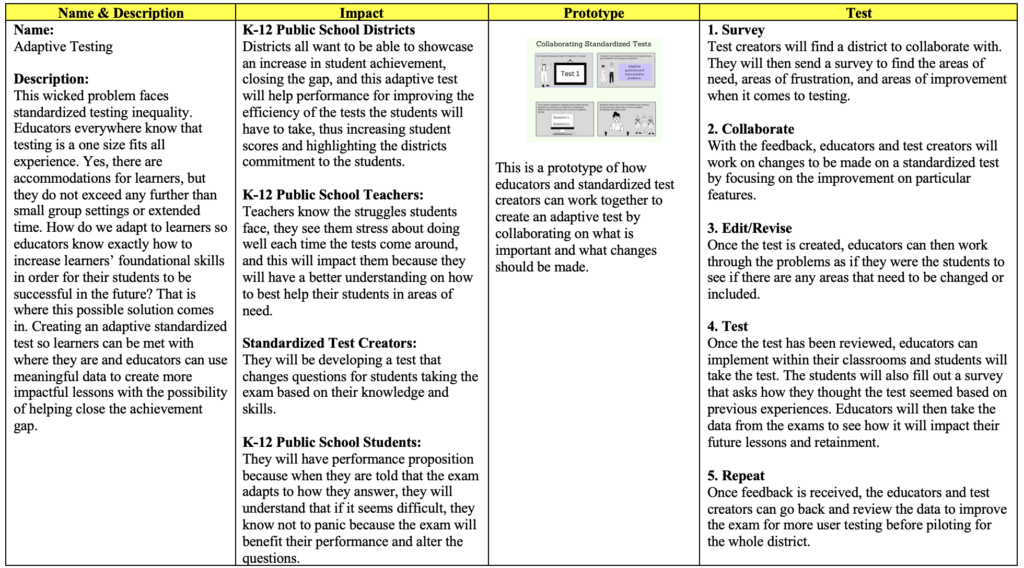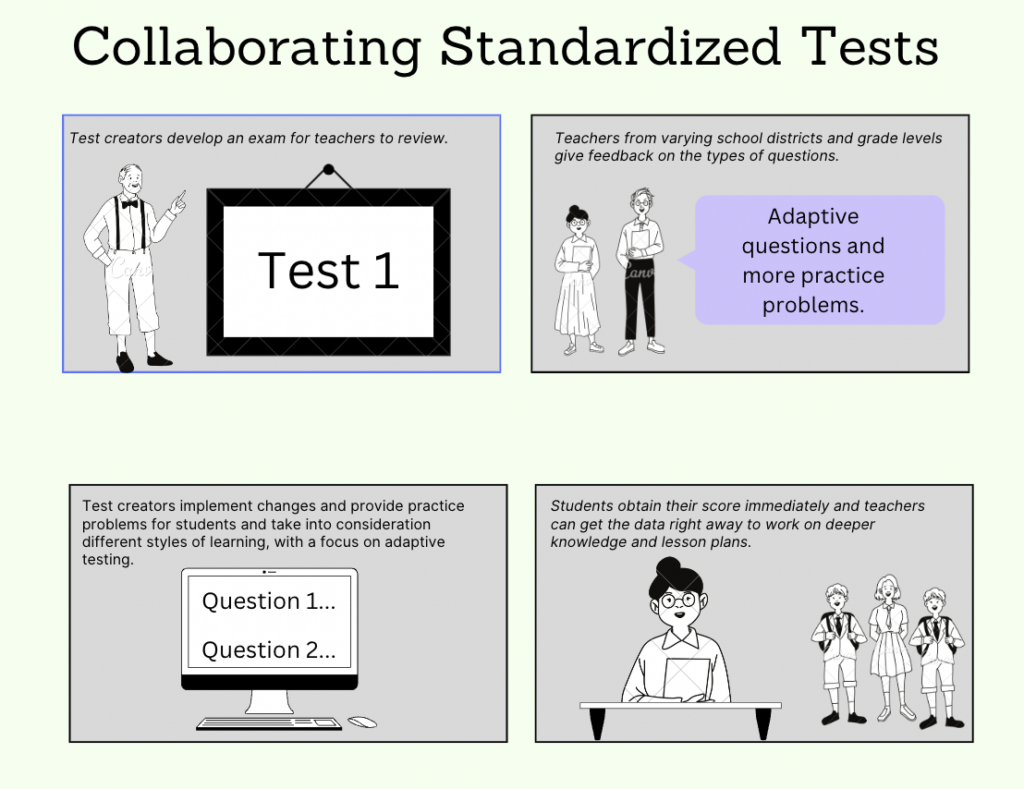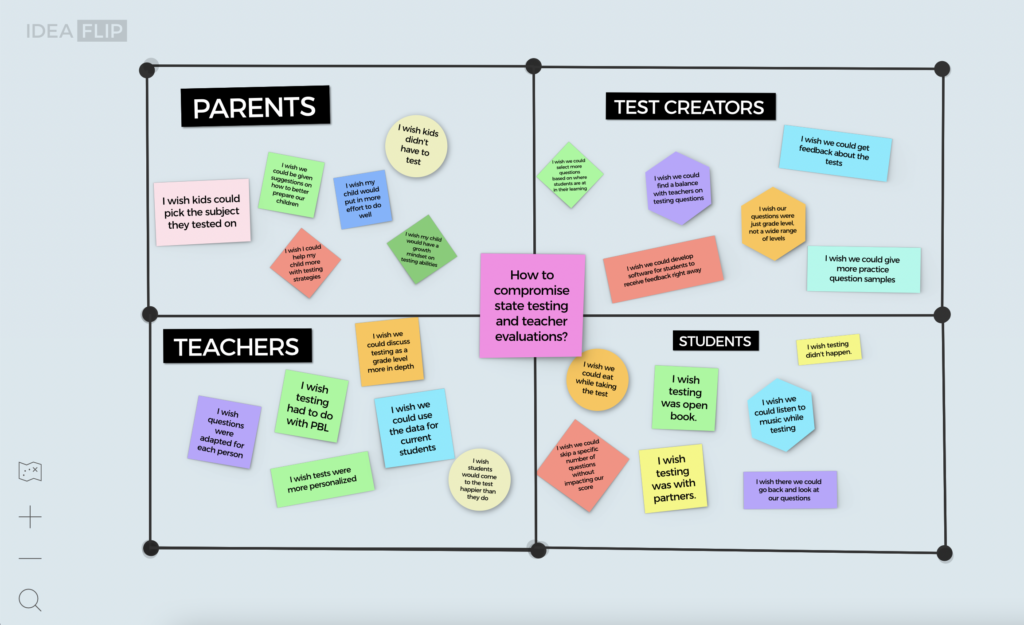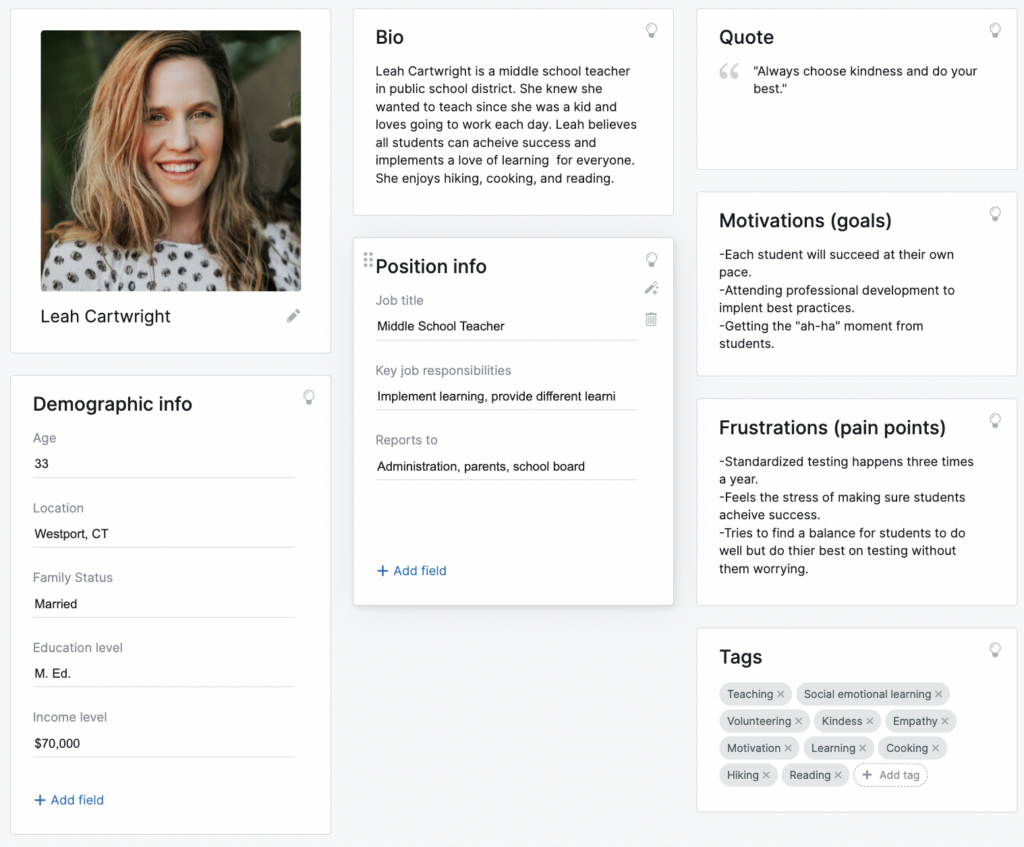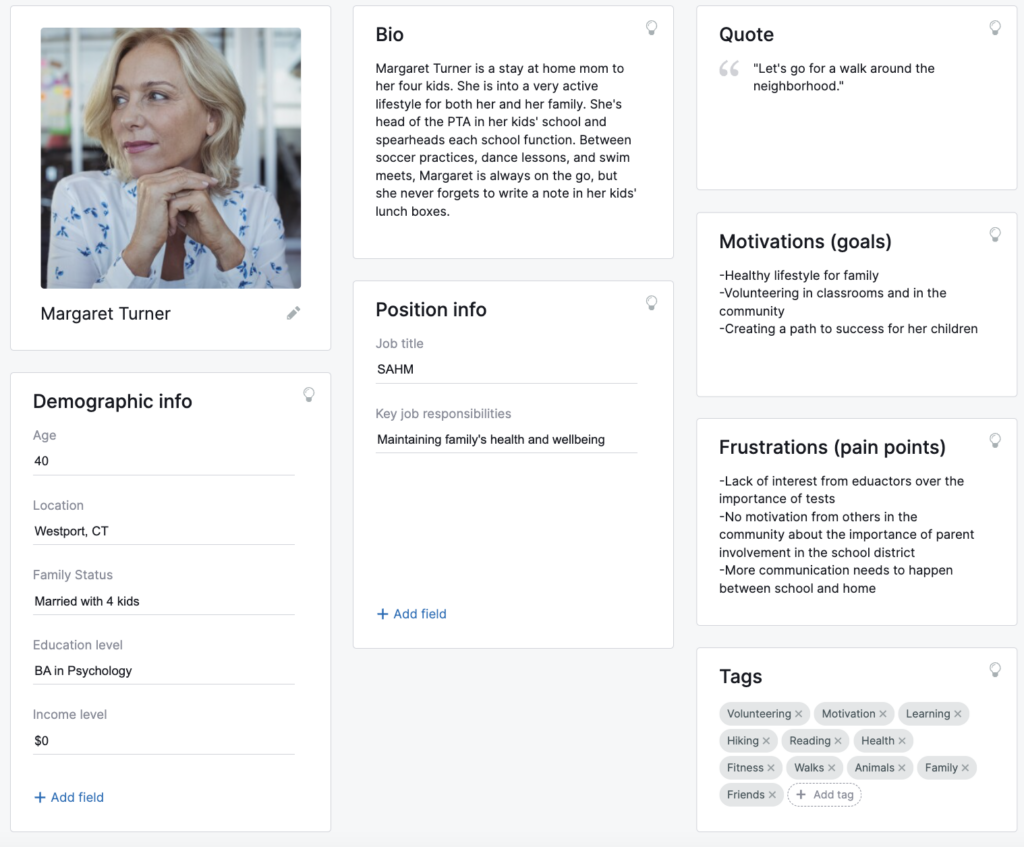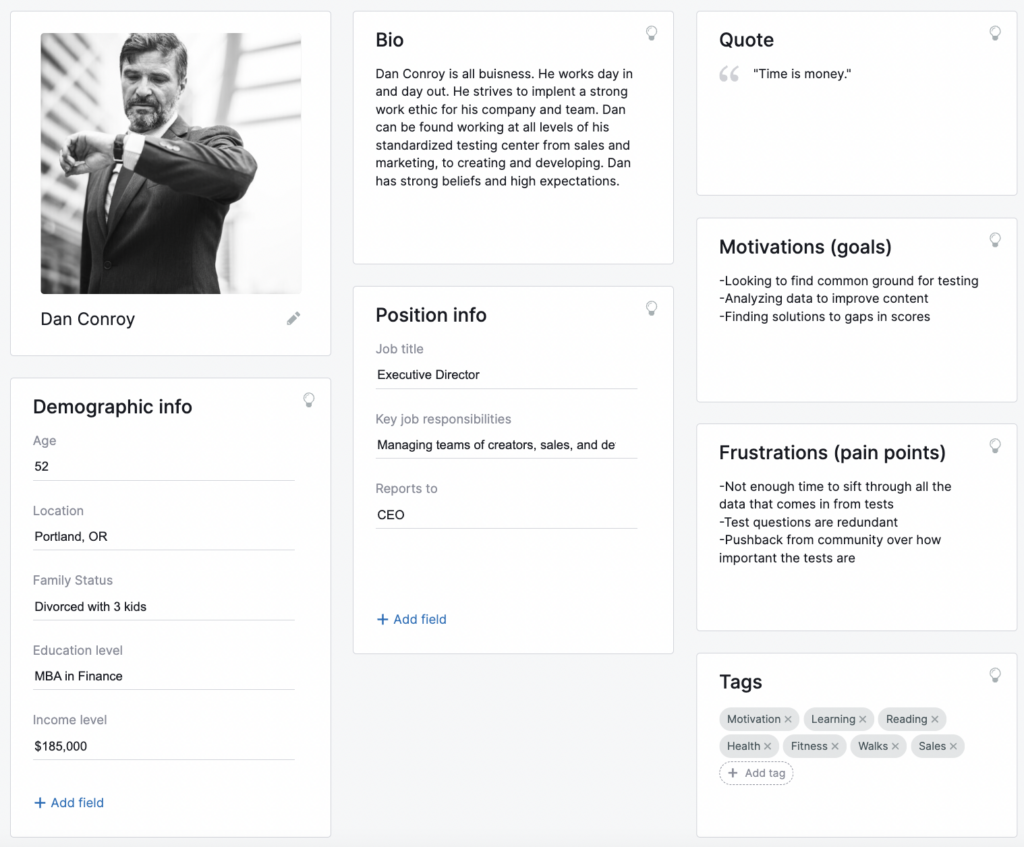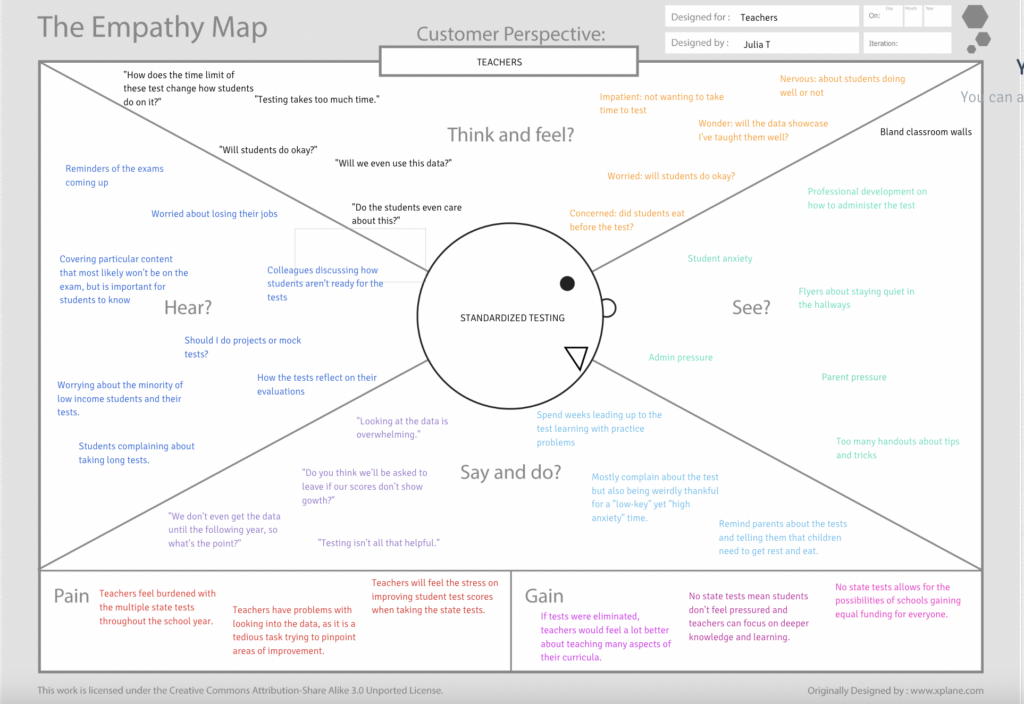To fully validate your idea, testing is crucial. Soliciting user feedback, even the negative kind, is essential in the testing phase of the design thinking process. It’s equally important to maintain a prototype mindset during testing to avoid becoming too attached to the idea. The prototype should be easy to develop and cost-effective, with the understanding that changes will be made along the way, ultimately improving the product.
To address my wicked problem of standardized testing, I propose an adaptive test. To test this idea, educators and test creators must collaborate to identify areas of improvement within the existing tests. A survey could be conducted to pinpoint specific areas. Then, educators can work with the test creators to implement changes. Educators can play the role of student users, test the new exam, and provide feedback on any last-minute changes. Students can then take the exam and complete a survey to provide additional feedback. The data gathered can help improve the adaptive component before piloting it with an entire district.
